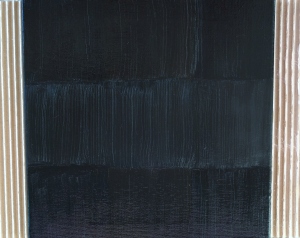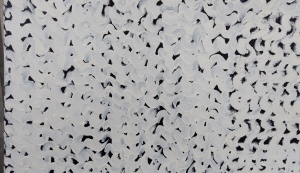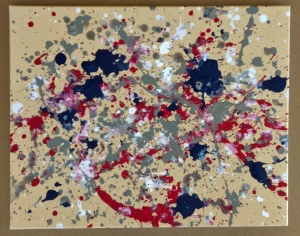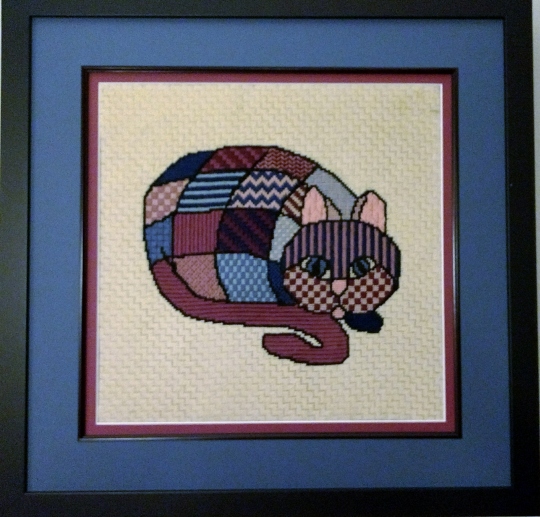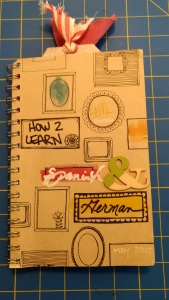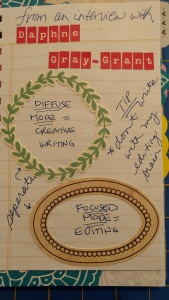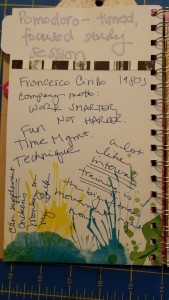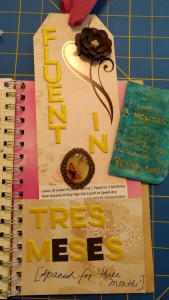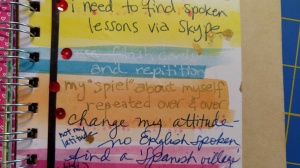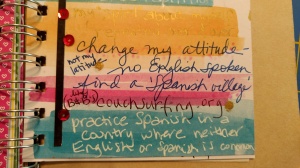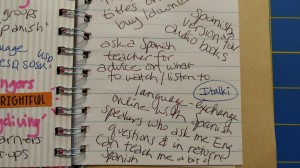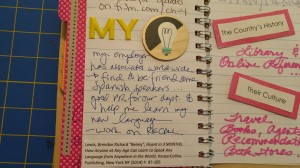The original title of this article was “How I Cured My IBS” but a couple of pharmaceutical companies would not appreciate what I have to say, so it seemed appropriate to re-title my story as “My Love Affair with Sweeteners.”
I grew up in the Midwest. When I was 16, I spent the summer caring for my German grandmother who used a wheelchair for mobility in her home in San Francisco. What an adventure I had! Five cents and any bus, streetcar, trolley or other form of public transportation would take me from one end of this fascinating city to the other. (I know, I know. In this day and age, a teen exploring a big metropolitan city alone would not be safe, but it was a simpler time, or a more-naïve time and I ran footloose.) At that time, the mid 1970s, Tab diet cola was the beverage of choice for teens like myself. Tab? Yes, Tab. Tab was the Coca-Cola Company’s prequel to Diet Coke. You would see the hot pink aluminum can everywhere. The Coca-Cola Company marketed flavored Tab, too, and 3 or 4 flavors I remember were available in the San Francisco area: Lemon Lime, Orange, Root Beer, and Black Cherry, each in their own vividly colored can.
In our junior year of high school, back in the days when gasoline was $0.52 per gallon, my best friend, Vicky, and I would sneak off campus for a trip to McDonald’s, Mickey D’s as we called it. Our order was always the same: “A quarter-pounder with cheese and a Tab, please”. Tab was sweetened with saccharin, the small pink packet you find on the table in restaurants. By the time we graduated from high school (and mind you that I thought I was fat then but looking back I would love to be that nice, comfortable, average size again), I had subconsciously chosen sodium saccharin as my first choice for sweetener. My father used a liquid version of saccharin, Sweet 10, to add a few drops in each cup of his daily coffee habit.
Saccharin, in this case Sweet ‘N Low, was the first “sugar substitute” I tried. Some sugar substitutes are natural and some are man-made or synthetic, hence the current label of “artificial” sweetener. Goggling the word artificial, you find this definition: made or produced by human beings rather than occurring naturally, typically as a copy of something natural. Over the years, other types of sugar substitutes were marketed with the explanation of how bad the one we were using was for us. Kind of like the “eggs are high in cholesterol” debate: No, they aren’t, Yes, they are… My love affair with sweeteners was as engrained in me as my constant battle to lose weight.
Along came aspartame, an artificial non-saccharide sweetener used as a sugar substitute in some foods and beverages. Wikipedia tells us that aspartame is a methyl ester of the aspartic acid/ phenylalanine dipeptide, a.k.a. chemical-based, manufactured, and “artificial.” Fatty acid methyl esters are used to produce detergent and biodiesel. Equal was the most common brand of aspartame available. Our post-college days found me and my friends talking about the effects of Equal, such as headaches, cravings for more sugary foods and drinks. I had none of these symptoms, or at least was so far in denial that I would never have admitted it if I did. Giving up my little blue packet of Equal was not going to happen.
Sucralose was discovered by researchers, i.e. man-made, chemical, and artificial. The Splenda brand, in the little yellow packet, became my best friend. I wasn’t the only one either as, in the turn of the century, Splenda took over a larger percentage of the U.S. $1.5B artificial sweetener market from Equal. Incidentally, saccharin (remember the pink Sweet ‘N Low packet), had been listed since 1981 as a substance reasonably anticipated to be a human carcinogen (a substance known to cause cancer), but was delisted in 2000 from the U.S. National Toxicology Program’s Report on Carcinogens. Now we fast forward again to current time and are talking about the little yellow packet again, noting that in February 2016, The Center for Science in the Public Interest downgraded Splenda’s safety rating from “caution” status to “avoid” status.
You may be thinking, “Thanks for the history on artificial sweeteners but wasn’t this article about IBS?” Well, you are right. Since the time I was in 8th grade, I had suffered with stomach and intestinal problems. The doctor performed tests and labelled my condition a spastic stomach. I was told not to eat or drink highly acidic foods, like citrus fruit and chocolate. No more OJ in the morning and carob from the “health food” store became a substitute for chocolate cravings. A few years later, the doctor advised me that the list of foods to avoid included dairy because of the lactic acid. Well, it would’ve been nice if you’d told me that initially as I was the typical glass of milk during dinner kid who woke up in the morning with terrible stomach cramps. I missed about a third of my junior year of high school because of this pain which could easily have been avoided.
Fast forward to my 20s and 30s and I could occasionally enjoy a grapefruit or orange but not cow’s milk, cottage cheese or even later as yogurt became more mainstream, I was unable to enjoy that either. Other foods upset my digestive system, and the reaction was often spontaneous, but I never paid much attention to what or why. I simply knew I was identifying the restroom location in any building I entered long before I might need it.
Then sometime in my 40s, I saw a TV commercial with a group of people at a party and squiggly lines were drawn on their stomachs. The commercial talked about IBS, Irritable Bowel Syndrome. Hmmm, I thought. I wonder if that’s what I have? At my annual physical, I ask my internal medicine physician and my hopes are dashed. No, no, she tells me, IBS is constipation not the diarrhea you experience. Like a deflated balloon, I left disappointed and without any relief from my unpredictable unhappy intestines. My friends are now at this age when they think doing a “cleanse” is a great idea and I cringe at the thought. Why would I need a digestive cleanse when my body does that for me naturally any time it wants?
Now I’m in my 50s and it’s time for my first routine colonoscopy. Oh, joy! Of course, I am so worried about the product you have to drink the day before that I won’t even think about scheduling one. My doctor advises me to consult with a gastroenterologist and see what they say. Low and behold, one conversation with this amazing doctor and I have a diagnosis: IBS-D. Irritable Bowel Syndrome with Diarrhea. But I had been told…. Well, that doctor didn’t know what she was talking about. Here’s a Low FODMAP diet that should help you. Fiber supplements will help, too. Fiber for diarrhea, really? Yes, really. Oh, and by the way, let’s get you on my calendar for your colonoscopy. Oh, well, okay… I think.
So what’s a FODMAP? Fermentable Oligosaccharides Disaccharides Monosaccharides And Polyols. That just sounds like more chemicals, right? These are short-chain carbohydrates that if not digested properly ferment in the large intestine or bowel, resulting in chronic gastrointestinal symptoms such as recurrent bloating, gas, cramps, diarrhea or constipation. Check, check, check and check. So, I’m off to study the “Eat This – Not That” list. And no one mentions to me that this diet might be needed only temporarily. I presume I’m looking at having to give up onions and garlic forever! The 5 fiber caps I down each morning, with lots of water for fear that I might choke if they start to dissolve before entering my stomach (I recall that Mama Cass Elliott died from choking on a sandwich and how embarrassing would that be?), work for me and most of my problems are gone.
When I have to have the colonoscopy, though, I have to stop taking the fiber 5 days beforehand and that immediately causes me to have explosive diarrhea again. By the time I get to drink the lemonade flavored potion, my system has cleaned itself out and it’s no problem for me. Actually, the symptoms I experience routinely are what the average person experiences with the liquid laxative requirement. I am happy with managing my symptoms on my own from there.
Then we see the deluge of commercial for medications to treat Crohn’s disease and IBS. In one, a woman is being seated at a table in what appears to be a nice restaurant to enjoy a nice meal. She hasn’t even sat down yet and her stomach takes over and you can tell from her expression she’s not feeling so great. Why would this be, I think? She hasn’t even eaten anything. Well, smells play a big role in my IBS, too. I literally cannot walk into a candle shop without my stomach revolting. So, the fragrance of cooked food can irritate me, also. And next TV introduces us to Irritabelle, your irritable bowel sidekick, an actress dresses in a nude unitard who joyfully plops down on your desk or next to you on the sofa whenever you think about going to a meeting or going out with friends to eat. Hmmm. Okay, stressful situations and the unknown may also be a trigger. Good to know.
What did it for me was when I recognized I was leaving my home around 8:00 p.m. most nights to go to the drive through for the $1 any size Coke Zero. Was I addicted? I think so. Why else would I do this? I decided in March 2017 to stop drinking diet soda. Then I took it a step further and, for no particular reason that I can remember, I decided to eliminate all artificial sweeteners from my diet. I went through the frig, the freezer and the pantry cupboards throwing things out, one by one. When I was done, I could not believe how much of my daily diet included this crap! Splenda in my coffee or iced tea, diet juices, diet flavored water, diet soda, sugar-free syrup, sugar-free jam, sugar-free candy, ice cream, o my goodness, the list went on and on. I had been eating CarbMaster yogurt from Ralph’s (a Kroger store) because at Weight Watchers they told us it only had 4 carbs per container, but it, too, is artificially sweetened. I read up on artificial sweeteners and decided I had had enough of that.
I had tried stevia years before and complained that it tasted bitter. You too? Well, stevia became my new best friend. Stevia was often coupled with erithryol, so I read about erithryol and all of the cautions about man-made erithryol versus plant-based erithryol. I read, too, that most of the erithryol sold or used in foods in the U.S. is man-made. So the plant-based erithryol is okay for daily human consumption, but not so much the chemically manufactured kind. So, I started reading labels looking for stevia without erithryol. I also started to reduce how much sweetener I used in food and drinks so I was no longer craving sweet tastes.
And the side effect of this lifestyle change? No more diarrhea! No more IBS-D! For 40 years, I had been drinking and eating artificial sweeteners and the resulting symptoms had dictated my life. For 40 years. But no more. I keep thinking I should let my gastroenterologist in on this discovery, but I am sure he’ll remind me it’s time again for my next colonoscopy, and I’m in no hurry to do that, so mums the word! Sometime this year, in 2018, I will schedule it, but I’ve got two-thirds of the year remaining, so what’s the rush? I no longer need to take daily fiber, so a couple of days before my procedure, I plan to enjoy a diet soda (or two!). Maybe you’ve decided to take better care of your digestive system, too. If so, nix the artificial sweeteners and take back some control of your life.
My disclaimer: None of the information I refer to in my story is fact-based. Please do your own research if you are interested in what I’ve told you here in my story. All I know is that this worked for me. I wrote about it because I hope it helps others, too.














